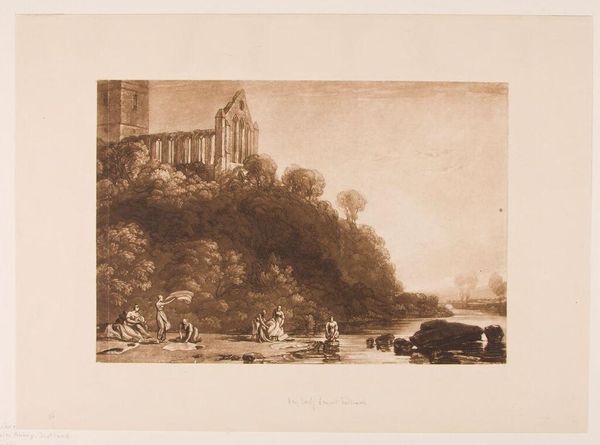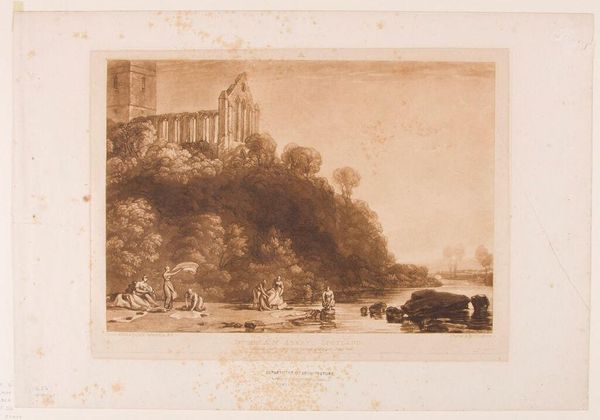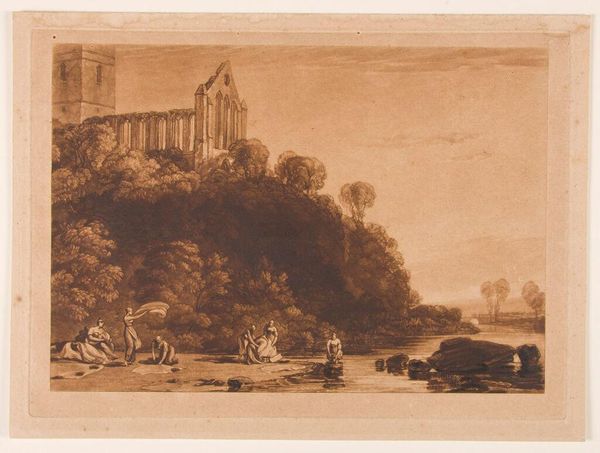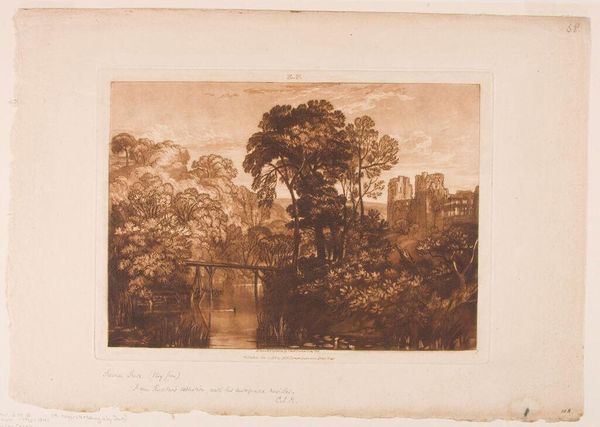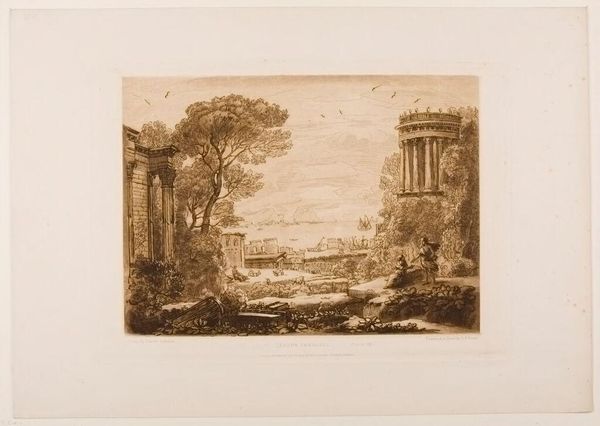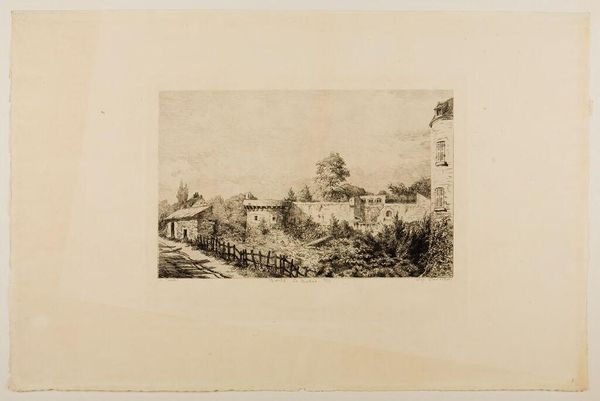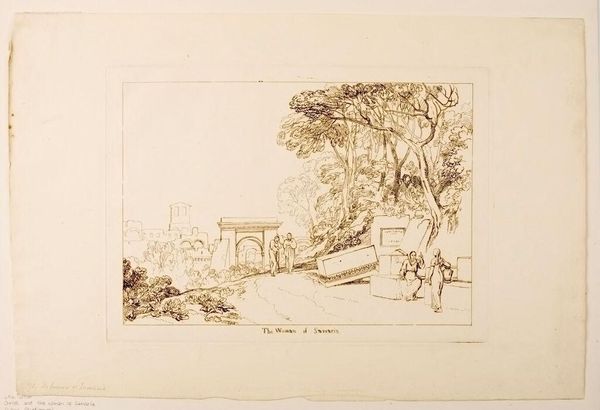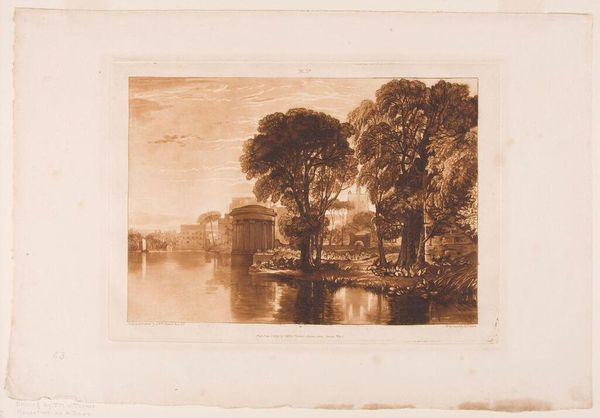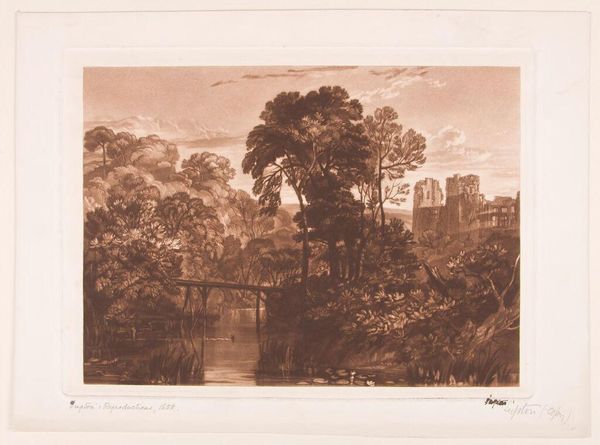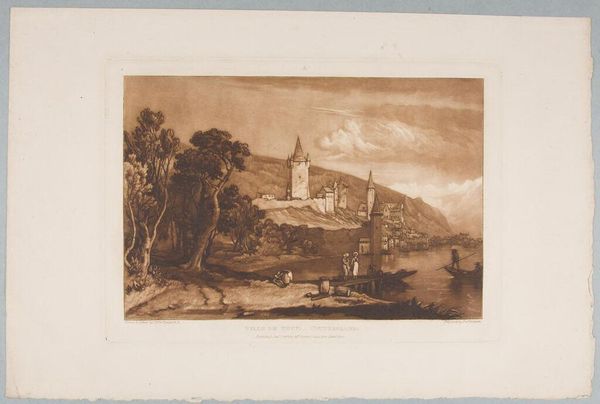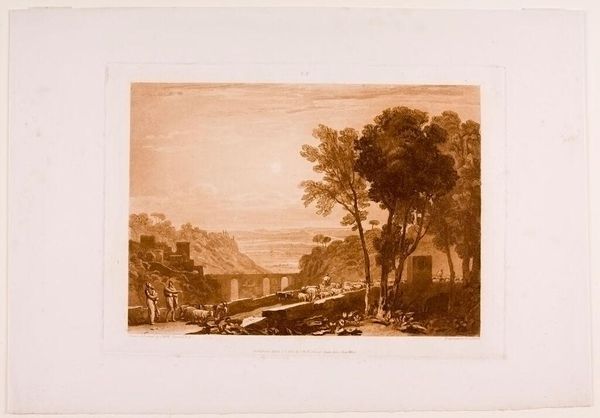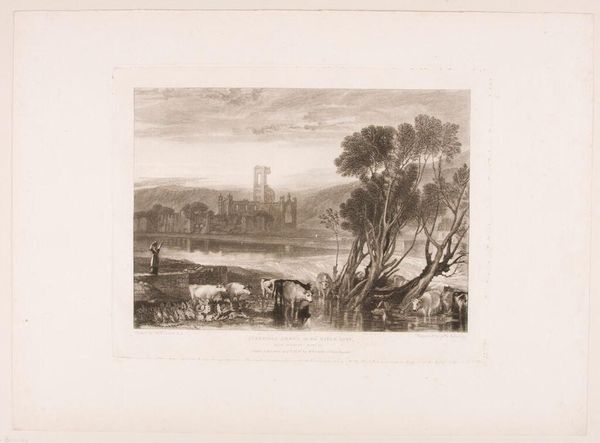
Copyright: CC0 1.0
Curator: Here we have Thomas Goff Lupton's "Dumblaine Abbey, Scotland," currently residing in the Harvard Art Museums. What are your first thoughts? Editor: Somber. The sepia tones give it an aged feel, and the ruined abbey overlooking the figures creates a sense of history and reflection. Curator: Indeed. Lupton, born in 1791, captures the Romantic era's fascination with ruins and the past. The process involved mezzotint, a printmaking technique allowing for rich tonal gradations. Editor: The velvety texture achieved through mezzotint really softens the harsh lines of the architecture. The labor involved in this process also speaks volumes about the value placed on reproducing such scenes. Curator: Absolutely. These images circulated widely, shaping perceptions of Scottish landscapes and history. It contributed to a romanticized vision of Scotland that was being consumed by a British audience. Editor: The figures in the foreground seem almost oblivious to the abbey's presence. Are they simply enjoying leisure by the waterside? The contrast is striking. Curator: That's precisely the tension Lupton establishes: the ephemeral present against the enduring weight of the past and the commercialization of the sublime. Editor: It’s interesting to consider the social and economic forces at play in producing and consuming images of ruins like this. Curator: A window into the complex relationship between art, commerce, and the construction of national identity. Editor: I see the material and the social so intertwined here.
Comments
No comments
Be the first to comment and join the conversation on the ultimate creative platform.
